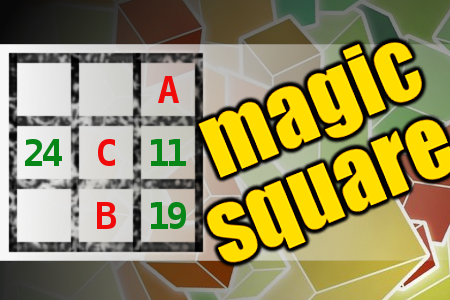MAGIC SQUARE: Calculate A-B*C
The aim is to place the some numbers from the list (11, 13, 17, 18, 19, 20, 22, 24, 27, 72) into the empty squares and squares marked with A, B an C. Sum of each row and column should be equal. All the numbers of the magic square must be different. Find values for A, B, and C. Solution is A-B*C.Correct answers: 1
#brainteasers #math #magicsquare

Three doctors
Three doctors are waiting in line to get into the Pearly Gates. St. Peter walks out and asks the first one, "What have you done to enter Heaven?"
"I am a pediatrician and have brought thousands of the Lord's babies into the world."
"Good enough to enter the gates," replied St. Peter and in he goes. The same question is asked of the second doctor.
"I am a general practioner and go to Third World countries three times a year to cure the poor." St. Peter is impressed and allows him through the gates. The third doctor steps up in line and knowing the question, blurts out, "I am a director of an HMO."
St. Peter meditates on this for a while and then says, "Fine, you can enter Heaven...but only for 2 days."

